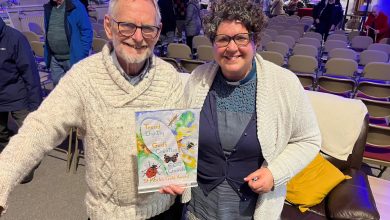Ice cream stall quits Norwich Market in row over lease

Hunt’s Fish Market: A Heartfelt Goodbye to a Generations-Old Tradition
In a decision that weighs heavily on both heart and business ledger, Mr. Hunt has announced the closure of his family’s beloved fish market stall, a fixture in the local community since the 1930s. “Unfortunately the cost of the rent, and staffing costs, it just wouldn’t be viable,” Mr. Hunt explained with evident regret in his voice. This wasn’t a choice made lightly, but rather one that economic realities forced upon a business that has served multiple generations of local families. The market stall has been more than just a commercial enterprise—it has been a landmark where countless customers first visited as children, only to return decades later with their own children in tow, continuing a cherished tradition of selecting fresh seafood while absorbing the unique atmosphere of the market.
The closure comes in the wake of what Mr. Hunt describes as an unusually substantial rent increase. While yearly increases have been the norm throughout the business’s tenure at the market, this particular hike represented a significant financial burden that the family business simply couldn’t absorb. Adding to the financial strain was an unexpected new requirement that the stall remain open year-round—a dramatic operational change for a seasonal business that has traditionally adjusted its schedule to match demand patterns. Mr. Hunt noted with some puzzlement that no explanation was provided for this new requirement, speculating that the stall’s prime location “at the front” of the market might be behind the change in terms.
The decision to close marks the end of a chapter spanning nearly a century in the Hunt family’s business history. Fish markets have traditionally served as more than mere commercial spaces—they function as community gathering places where relationships form between vendors and customers, where expertise is shared freely, and where the connection to local food sources remains tangible in an increasingly disconnected food system. For the Hunt family, the stall represented not just their livelihood but their heritage and connection to previous generations who built the business through dedication and personal service. The pain of closure is evident in Mr. Hunt’s words, as he acknowledges the deep emotional impact this will have on both his family and their loyal customers.
Throughout its long history, the market stall became intertwined with the community’s collective memory—a touchstone for local identity and tradition. “There are a lot of memories of people being taken there as children, and then taking their children,” Mr. Hunt reflected, highlighting how the business transcended simple commerce to become part of the area’s cultural fabric. This generational continuity created a sense of stability and belonging in an otherwise rapidly changing world. Customers didn’t just purchase fish; they participated in a ritual that connected them to their own past while supporting a family business that embodied values of quality, expertise, and personal connection—qualities increasingly rare in modern retail environments.
While the closure marks the end of this particular chapter, Mr. Hunt hasn’t completely ruled out a future market presence. Though the traditional permanent stall model has become economically unfeasible, he mentioned the possibility of returning in a different capacity, perhaps as a “pop-up” operation. This approach might allow the family to maintain their connection to the community and continue their tradition of quality seafood provision while adapting to changing economic realities. Such evolution represents the pragmatic resilience that has likely helped the business survive through previous decades of economic and social change, though it comes with the bittersweet acknowledgment that things will never be quite the same as they were.
The story of Hunt’s fish market stall mirrors broader changes happening in markets and high streets across the country, where independent family businesses increasingly struggle against rising costs, changing consumer habits, and property development pressures. Each closure represents not just a business decision but the fading of a particular way of life—one where shopkeepers knew their customers by name, where specialist knowledge was valued, and where commerce had a human face. Mr. Hunt’s parting words that the closure is “very sad” encapsulate the emotional weight carried by small business owners who find themselves caught between preserving tradition and facing economic reality. For the community, the challenge will be finding ways to remember and perhaps reinvent these connections that have defined local identity for generations, even as the physical spaces that housed them change or disappear.








